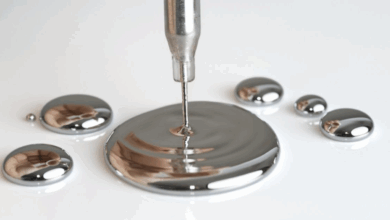Curcumin found to be effective to treat Parkinson’s disease – Study
 Chemical compound Curcumin present in Turmeric has been found to be very effective in prevention of the accumulation of a protein that is involved in causing Parkinson’s disease. The fact was carried forward by a team of researchers headed by Basir Ahmad, a Michigan State University postdoctoral researcher. Earlier this year, the same team has successfully demonstrated the action of slow-wriggling alpha-synuclein proteins in causing the aggregation that is the reason for diseases like Parkinson’s. “Our research shows that curcumin can rescue proteins from aggregation, the first steps of many debilitating diseases,” said Lisa Lapidus, MSU associate professor of physics and astronomy who co-authored study with Ahmad. “More specifically, curcumin binds strongly to alpha-synuclein and prevents aggregation at body temperatures,” she added. Proteins are made of a continuous chain of amino acids that are responsible for doing most of the work in cells. Though the structure of the protein is understood to scientists, but it is still unknown to them that how they are built. This process is known as folding. Lapidus’ lab studies these proteins folding with the help of lasers. The team of Lapidus’ lab understands the process by finding the speed of the protein folds and its tendency to aggregate and combine with another protein. “Curcumin”, the compounds present in turmeric attaches to the alpha-synuclein that is responsible for Parkinson’s disease not only stops the accumulation of protein but also enhances the rate protein’s folding or reconfiguration. Thus by increasing the speed of the folding curcumin pushes the protein away from the dangerous speed zone and thus allows it to check the clumping of this protein with the others. These findings can help the scientists a lot for identifying effective drugs for certain diseases like Parkinson’s that are casued due to misfold of protein. “Curcumin’s usefulness as an actual drug may be pretty limited since it doesn’t go into the brain easily where this misfolding is taking place,” said Lapidus. “But this kind of study showcases the technique of measuring reconfiguration and opens the door for developing drug treatments,” she added. The findings of the study was recently published in current issue of the Journal of Biological Chemistry.
Chemical compound Curcumin present in Turmeric has been found to be very effective in prevention of the accumulation of a protein that is involved in causing Parkinson’s disease. The fact was carried forward by a team of researchers headed by Basir Ahmad, a Michigan State University postdoctoral researcher. Earlier this year, the same team has successfully demonstrated the action of slow-wriggling alpha-synuclein proteins in causing the aggregation that is the reason for diseases like Parkinson’s. “Our research shows that curcumin can rescue proteins from aggregation, the first steps of many debilitating diseases,” said Lisa Lapidus, MSU associate professor of physics and astronomy who co-authored study with Ahmad. “More specifically, curcumin binds strongly to alpha-synuclein and prevents aggregation at body temperatures,” she added. Proteins are made of a continuous chain of amino acids that are responsible for doing most of the work in cells. Though the structure of the protein is understood to scientists, but it is still unknown to them that how they are built. This process is known as folding. Lapidus’ lab studies these proteins folding with the help of lasers. The team of Lapidus’ lab understands the process by finding the speed of the protein folds and its tendency to aggregate and combine with another protein. “Curcumin”, the compounds present in turmeric attaches to the alpha-synuclein that is responsible for Parkinson’s disease not only stops the accumulation of protein but also enhances the rate protein’s folding or reconfiguration. Thus by increasing the speed of the folding curcumin pushes the protein away from the dangerous speed zone and thus allows it to check the clumping of this protein with the others. These findings can help the scientists a lot for identifying effective drugs for certain diseases like Parkinson’s that are casued due to misfold of protein. “Curcumin’s usefulness as an actual drug may be pretty limited since it doesn’t go into the brain easily where this misfolding is taking place,” said Lapidus. “But this kind of study showcases the technique of measuring reconfiguration and opens the door for developing drug treatments,” she added. The findings of the study was recently published in current issue of the Journal of Biological Chemistry.
Source : News Track India




